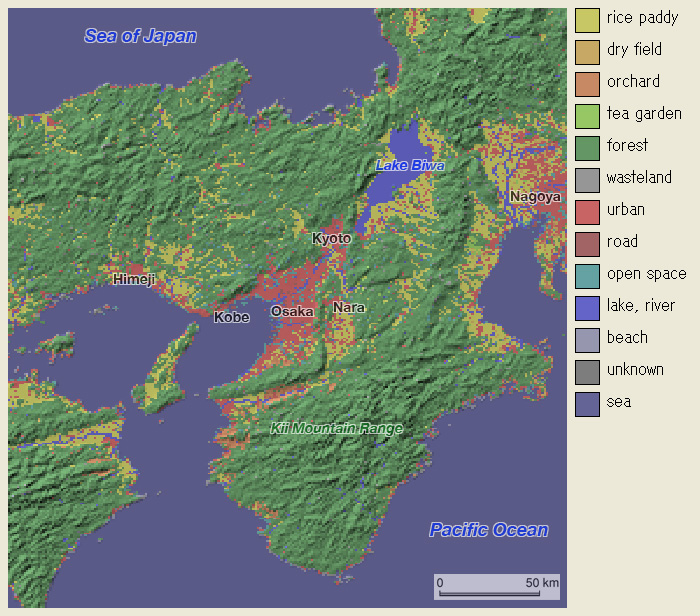Capital of Japan for a Millenium
Due to the retirement of the website administrator, this site was moved from Kyoto University to «http://kyotohumanities.jp/KyotoHistory/». (May 11, 2023)
Satellte image of Kyoto. SPOT 7 (2016/05/01) true color image (©Airbus DS 2016). The grid plan of the ancient capital, Heian-kyo, is overlaid.
Map of Kansai district of Japan showing the geographical context of Kyoto Data Source: digital elevation data and digital land use data provided by the Geospatial Information Authority of Japan Processed and visualized by Noboru Ogata. |
 |
| Since : March 30, 2018 | Last updated : July 28, 2025 |